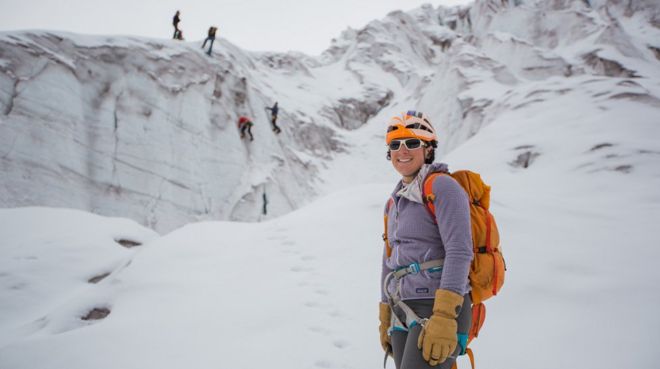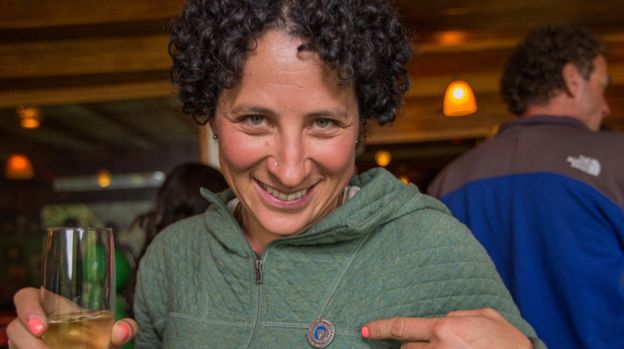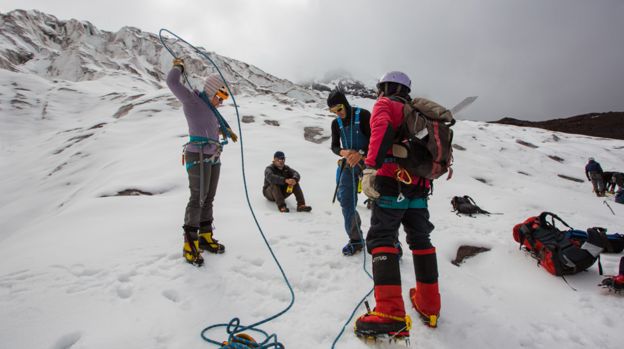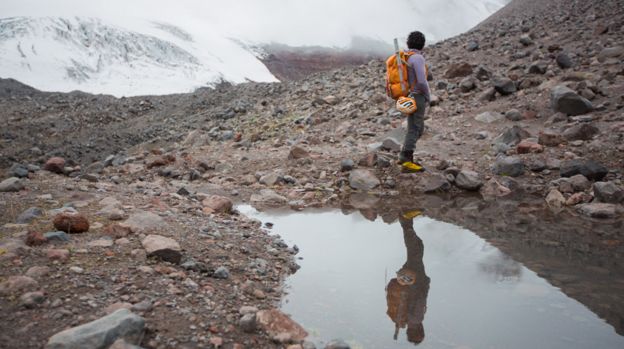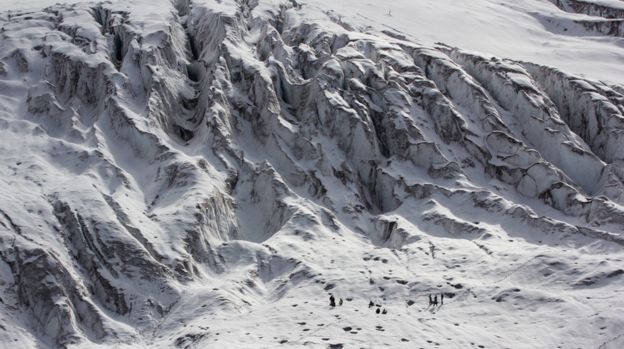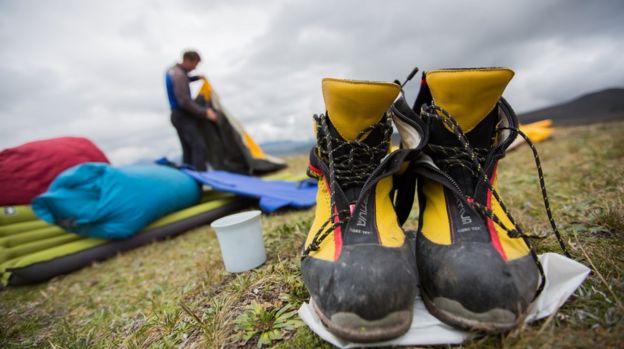West Coast runner Dave McKenzie shocked
everyone but himself in winning the Boston Marathon 40 years ago. Yet, as Greg Lautenslager reports, the triumph
did little to change him.
Dave McKenzie during the 1967 Boston marathon (West Coast Recollect)
The gold letter “G” that was emblazoned on Dave McKenzie’s green vest and carried 42km from Hopkinton, Massachusetts to Boston on that wet, freezing afternoon did not stand for “Greece,’’ as a reporter asked after his record run 40 years ago.
The gold letter “G” that was emblazoned on Dave McKenzie’s green vest and carried 42km from Hopkinton, Massachusetts to Boston on that wet, freezing afternoon did not stand for “Greece,’’ as a reporter asked after his record run 40 years ago.
It didn’t
stand for “Ginger,” as the diminutive red-head was called on his two-hour runs
up and down the winding West Coast roads with his running mates. The “G” stood
for the Greymouth Athletic Club, from an area he rarely wanted to leave and
couldn’t wait to return after the 60 or so international reporters ceased
asking questions and photographers stopped taking pictures of the 1967 Boston
Marathon champion.
Within
minutes the announcement came over the wire to the Greymouth Evening Star and
to newspapers all over the world, “Boston, April 19, AAP – David C. McKenzie of
New Zealand today won the 71st Boston Marathon in the (race) record
time of 2hrs 15min 45sec.”
The words
rang out over the teleprinter at the Nelson Evening Mail where George McKenzie,
Dave’s oldest brother and also a runner, was working as a printer. “Gordon
Hay (a sub editor) came over and said,
`Your brother’s won the Boston Marathon.’ I was over the moon.’’
By the next
evening almost every newspaper in New Zealand told of McKenzie’s triumph. Many
had photos of the 24-year-old crossing the finish line with his white gloves at
his side and long-sleeve T-shirt tucked under his singlet or smiling with a
victorious laurel wreath atop his head.
He shared a
champagne toast with U.S. Ambassador John Henning upon his arrival in Auckland
and was greeted by about a thousand citizens at a civic reception outside the
Greymouth Borough Council Chambers. A photo in a local newspaper shows him
shaking hands with a man in the gallery. The words from McKenzie underneath the
photo read, “I was very pleased to win in the Greymouth colours – it was a
great thrill winning for the Coast.”
Then he
returned to his parents’ home in nearby Dunollie and to a life that had not
changed a bit.
McKenzie was
born in a maternity home down the block from his parents’ house. His mother
later carried him 50 metres to their house on Inverness Street and he never
moved out until he got married in his early 30’s. He bought a house across the
same street, 40m from his parents’ house, and has lived there ever since.
“It’s a
good quality life, why would I want to change?’’ he said.
McKenzie, 64, started work as a machine print
operator at the Grey River Argus newspaper after leaving school at age 15 and
spent 38 years at the Greymouth Star,
before retiring a few years ago.
His first
running competition came when his brothers and mates raced home from the movie
theatre 1,500 metres away or on a 700m loop around their street. They pretended
they were racehorses and gave each other names like Van Dieman, Johnny Globe,
and Highland Fling.
McKenzie
starred in rugby league and won the intermediate mile race at high school in
5:10 at age 14.
“I was
having him on at the dinner table that night, saying that I had run faster when
I was his age,’’ George McKenzie said.
Dave said,
“One day I am going to run 26 miles at that pace.”
It was the
exact pace he would run to win the Boston Marathon.
McKenzie
joined the Greymouth Athletic Club at age 15. He and another Greymouth runner,
Eddie Gray, started winning races on the track and the road and made names for
themselves outside Greymouth. At age 16, McKenzie ran the fastest of all
competitors on the Richmond to Tahunanui leg in the Motueka to Nelson Relay. He
also won track races at Trafalgar Park and at the Mahar Cup meets.
McKenzie
ran his first marathon, in Greymouth, at age 19 but pulled out at 18 miles with
stomach cramps. He returned the next year, in 1963, to the Great Westland
Marathon and won in 2hours 39 minutes. He improved to 2hrs 23min in 1964
despite having to step between the cars of a train that had been parked on the
railroad tracks 15 miles into the race and finished fourth in the New Zealand
Marathon Championships a few months later.
Later in
1965 he battled Bill Baillie, the then world record holder in the 20km and one
hour run, into the final two miles of a hot, windy New Zealand ten mile road
championships, only to fall 10 seconds behind in 48min 35sec.
“If I would
have gone hard at halfway, I would have beaten him,’’ McKenzie told his brother
George.”
By the end
of 1966 McKenzie had won four straight marathons, including the New Zealand
Championships in 2hrs 16min 59sec. and was named the West Coast’s sportsman of
the year. He had to withdraw from the New Zealand Empire Games team to Jamaica because of a leg injury but was gearing
up for a sensational 1967 campaign.
January 19,
1967, exactly three months before the Boston Marathon, is a day McKenzie – nor
any other Coaster – will forget.
Shortly
after 10 am a fireball from an explosion ripped through a section in the
Strongman mine, 11 kilometres north-east of Greymouth, killing 19 of the 240
men who were working that day. One of
the fatalities was Hector McKenzie, Dave’s brother. Another was Harry van Looy,
a training mate.
Dave’s
father, also a coal miner, had been called away from that section and survived
the blast.
George
McKenzie wondered how the tragedy would affect Dave or if he would even run the
next week’s Canterbury Marathon Championships.
But there he was, at 15 miles, storming ahead of the field and off to
another victory.
Jim
McKenzie, Dave’s younger brother, turned to George as they watched him go by.
“I think he’s running this one for Hec,” Jim said.
Perhaps
somewhere deep in Dave’s inward soul, Hec’s spirit drove him to victory in a
personal best 2hrs 16min 2 secs. But McKenzie said he was simply running.
“It’s a
race, and you have to put everything else out of your mind and stay focused.”
McKenzie
had all the tools to be a great marathoner.
He was compact at 1.6m, 55kg and had an efficient, rolling style. He
lived a simple life at his parents home and
ate his
mother’s cooking. He had no distractions
and could concentrate for long periods of time. He also was willing train as
hard as anyone.
McKenzie
coached himself, often reading running books by Lydiard and other coaches and
experimented with training to find the best method to prepare for a marathon.
His custom-made running shoes had a leather upper and a sole made from
jandals. He ran 10km to work and back
everyday and the hilly coastal roads on weekends.
George
McKenzie remembered Dave one Saturday running 40km along the gravel undulating
roads to Barrytown and a 16km club run in the afternoon. Dave would train up to 250km in a week.
“You could
really see Ginger’s strength coming through (in early 1967),’’ said Gray, who
would finish third in the World Cross Country Championships in 1971. “You could
tell he was ready for Boston.’’
A trip to
Boston was the prize for winning the New Zealand Marathon championship on March
11. “I didn’t know much about it other than it was a big race,’’ McKenzie said.
On April 7
McKenzie left his home for his first trip overseas without a thought of where
the journey might lead him – other than back to Greymouth.
Helicopters
hovered over the starting line of the 71st Boston Marathon.
Spectators lined up, five deep in some places, along the course and others
stood atop buildings and apartment balconies waiting for a glimpse of the more
than 700 runners. Photographers and reporters jammed into pace vehicles as the
world’s best marathoners toed the line in Hopkinton.
The route
to Boston is hallowed ground, where Clarence DeMar and Johnny Kelley etched
their names into the race’s storied history and where it would one day make
Bill Rodgers and many other winners running legends. It didn’t mean much to the freckled face lad
from Greymouth.
“It was
just another race,’’ McKenzie said. “Just like running to Barrytown and back.’’
McKenzie
had more difficulty getting to the starting line than to the finish line. His flight
from Greymouth to Nelson was cancelled due to mist and drizzle, and he
had to take a taxi. The 4 1/2 – hour drive was followed by flights to Auckland,
Tahiti, Los Angeles, and Boston.
He woke up
race day to an icy drizzle and winds up to 20km per hour. The roads were wet
and there was snow on the ground alongside the course.
“I was
coming from the summer in Greymouth, so I wasn’t used to these conditions.”
McKenzie
was less daunted by his competitors, which included a Japanese contingent that
held the first six places in 1965 and the top four in 1966. He ran in the lead
pack of 14 runners through the first half of the race through Wellesley. The
pack whittled down to seven after a series of hills in Newton, leading to
Heartbreak Hill at the 32km mark. The route wasn’t much different from the West
Coast roads, and McKenzie likened Heartbreak to his 10-Mile Hill back home.
McKenzie
surged up the hill and put 15m on a Japanese and an Italian. By the time he
reached the Boston City line 2km later, he had lengthened his lead and had more
than 400m on runner-up Tom Laris of the United States at the finish line.
A race
report read that McKenzie “took a jog
around the finishing area before wrapping himself in a blanket and going
inside.”
When the
adulation died down after his Boston victory, McKenzie returned to his normal
life as a machine print operator. He
finished third at the Fukuoka Marathon the following December in 2hr 12min
25sec and never ran faster. He competed in the 1968 Mexico City and 1972 Munich
Olympic Games but did not contend for a medal.
After
Munich, he married and raised his two sons and daughter. He eased back on the
training and did mostly club runs. He
was invited to run a marathon in Rotorua at age 35, and on half the training he
did in his glory years, he finished second in 2hrs 22min.
McKenzie ran until a few years ago, when he hurt his
knee in an accident. He still shows up at the Anzac Park track for meets and
coaches Josh Komen, a promising 19-year-old middle distance runner who lowered
his 800m best from 2min 3sec to 1min 53sec this season. He watches horse races,
plays with his grandchildren, and travels to Nelson and Christchurch. But he
always comes back home to Inverness Street, and is well known in the community
for his past achievements.
“I had bit
of success, and was that was part of life. Enjoying life is the main thing,
with no stress.’’
Fifteen
years after McKenzie’s triumph, prize money was offered at the Boston
Marathon. Winners today make six-figures
in prize, appearance, and bonus structures. They live all over the world in
mansions and drive fancy cars. Had McKenzie won during this era, George
McKenzie was asked if his brother’s life would be different
“No, I
don’t think so. He’d just be Dave.’’
Another article by Roger Robinson.
They say that once you win the Boston Marathon, life will never be the same. The victory brings fame, respect, money.


Another article by Roger Robinson.
Dave McKenzie: the Coaster who against odds won the 1967 Boston Marathon
The Boston Athletic Association has invited West Coaster Dave McKenzie to April's 50th anniversary of his record-breaking Boston Marathon victory in 1967. He and wife Adele will be among VIP guests at a celebration that will also include Kathrine Switzer, who famously first ran that year. McKenzie still lives in the same street in Dunollie, near Greymouth, that he left to go overseas for the first time in 1967.They say that once you win the Boston Marathon, life will never be the same. The victory brings fame, respect, money.
For some like Amby Burfoot it opens the way to a career; for some like American Bill Rodgers it means almost a new identity; for some like Stylianos Kyriakides, who carried a message from starving Greece in 1946, it confers a permanent place in history.
But for other champions, life changes only inwardly. In 1967 the unknown Dave McKenzie beat the bitter weather, the hills, the effects of travelling overseas for the first time, the all-conquering Japanese, and the race record - and then went quietly home to his family and his job as a printer on a small New Zealand newspaper.

Jared Smith
Dave McKenzie on the Coast with his Greymouth singlet.
In 2016 he lives in the same modest house on the faraway west coast of the South Island that he left to run Boston in 1967.
McKenzie is a private man, reticent about his days as a world-class runner. When you know him well, you might be shown his well-ordered collection of memorabilia. But the only visible evidence of his achievement is in the bar of the local hotel (pub), where a simple case displays the shoes he wore to win the Boston Marathon.

Jared Smith
Dave McKenzie's Boston Marathon medal.
Bars are important on the Coast (as the locals call their home region). This is a remote, rugged little world, once a gold-rush frontier, a narrow rain-soaked strip of farms and coal mines between the crashing surf of the Tasman Sea and the spectacular peaks of the Southern Alps. It is rarely on the map and fiercely proud when it is.
The local sport is Rugby League, and if you think regular rugby is tough, try watching league. Like all Coast boys, McKenzie wanted to play league, but he was pale, freckly, sometimes sickly, 1.60m/54kg, so at 20 he finally gave up hopes and became a runner.
In those days that meant a "club harrier." With his bow legs and swivelling stride, McKenzie placed well in races on Greymouth's grass track or through the winter mud of cross-country, but he never looked like a future champion. The earliest sign of that came when he ran his first marathon in 1964. It was a modest 2hr 40min, and no one noticed, except McKenzie.
He quietly realised that his rock 'n roll running action was well suited to the smooth road surface. And for the 26.2 miles distance, deep down he had iron will and long-term concentration.
For two years he ran to and from work, between Greymouth and his home in the even smaller settlement of Runanga, a lonely little figure with his sandy hair bowling along the winding Coast Road, 190km a week up and down those wicked hills, developing the versatile efficiency of his rolling yet springy gait.
In 1966 the unfancied McKenzie crossed to the North Island and shocked Arthur Lydiard's dominant Aucklanders by winning the New Zealand marathon championship. He ran 2hr 16min 59s, a world-class time.
Suddenly, he became marathon news. Hundreds of welcoming Coasters greeted him at Greymouth train station when he arrived home after a two-day rail and ferry journey.
But the road to Boston got hard. A stress fracture put McKenzie out of the 1966 Commonwealth Games, a marathon he could probably have won. (Mike Ryan, who was two minutes behind him in New Zealand, placed third.)
Then worse happened. As he was returning to full training, in January 1967, a sudden explosion devastated the Strongman Coal Mine, killing 19 men, including Dave's brother Hector, and his closest running friend.
The Coast was grief-stricken. Dave, as always, kept it inside, and two weeks after the funeral won the Canterbury Marathon in fierce dry heat in 2:16:02, in what has been called one of the greatest solo marathons ever run.
"He's running it for Hec," said a watching friend.
In Auckland a month later McKenzie retained his New Zealand title, beating the world record-breaker for one hour, Bill Baillie, and the rest of Lydiard's boys on their home roads. This time it was humid and windy - the man seemed impervious to extreme conditions. Running every day through the wind-lashed spray off the ocean had prepared him for anything. He looked ready to take on the world.
A running friend somehow persuaded the French Pacific airline to give him a flight to America. The Greymouth Lions' Club, in memory of Hector, sold "meat raffles" (sides of lamb donated by local farmers) round the bars, and raised his fares between Los Angeles and Boston. And so in April 1967 Dave McKenzie left New Zealand for the first time in his life, with the mission of turning grief into celebration for the tiny community where he belonged.
He was a house guest for the week in Winchester near Boston - no gilded hotels for elite athletes in those amateur days. But the Williams made the shy little stranger feel at ease, gave him privacy, and watched him head out twice a day "for a bit of a jog."
He still looked an unlikely prospect for the BAA, with the Japanese back in greater force than ever. He ranked sixth on best times. Reticent in interview, he gave little away with his short bursts of West Coast idiom. The only person to pick him, significantly, was organiser Jock Semple, who could recognise a hard and resolute marathoner when he saw one.
Years later Jock, in his famously impenetrable Glasgow dialect, had the temerity to complain to me, "Och, Wee Davie, aye, he was grrrreat, e'en though he did ha' a funna accent."
Terasawa, Hiroshima, Aoki and Inoue from Japan, Boychuk from Canada, Ambu from Italy, and Americans as good as Johnny Kelly, Tom Laris, Amby Burfoot and Ron Daws - Boston 1967 had maybe the greatest strength in depth the old race had ever assembled.
In freezing sleet, McKenzie wore white gloves and long sleeves under his green club singlet, with a big "G" sewn on the front, for Greymouth. He waited till the hills at 16 miles, and then – there is no other way to describe it – he simply took off.
"It clicked," is how he put it when he told me about that day. None of those world-ranked Olympians could match his springy Coaster's roll up the hills. By the top of Heartbreak Hill, he was a minute clear. Laris chased him hard into downtown Boston, but McKenzie knew all about running alone. The race was his, and the record, in some of the worst conditions the event had seen.
In film footage of the finish line, Jock Semple throws a blanket around McKenzie's wet shoulders, which Dave shrugs impatiently off, and stumps away along Boylston Street, for some quiet space away from the crowds and the fuss.
Two hours later, a 20-year-old called Kathrine Switzer, plugging on toward the finish-line despite the now-infamous attack on her by Semple, was entering the city. The evening papers were already on the streets, and as she and her coach Arnie ran by, a newsboy was shouting, "Read all about it! New Zealander wins Boston Marathon."
"We've got five miles to run, Arnie, and that guy's showered and is having a beer," she said yearningly.
Once she finished, the news stories changed. Headlines and pictures across the world splashed the amazing scenes of a "girl" gate-crashing the race, and the snarling Jock attacking her, and her big gallant boyfriend bouncing Jock.
Dave McKenzie didn't mind. He had done the job – for Hector, for the friends who raised his fares, and for the West Coast community. He wanted to go home.
But now he was one of the world's top marathoners, as well as Number 2 in Greymouth's cross-country team. At Fukuoka in December 1967 he ran a brilliant 2:12:25.8, behind Derek Clayton's historic world record 2:09:36.
His 1968 Olympic hopes, as for so many others, drifted away in the rarefied air of Mexico City (37th). The Coast Road had prepared him for anything, but not altitude. He was still good enough in 1972 to make his second Olympic team, at Munich (22nd).
My more circuitous path crossed with Dave's in 1968, and we became rivals, friends, and Canterbury team-mates. One time I had the privilege of being his team manager when he ran one of his wondrous solo victories in the New Zealand marathon championship.
Another time we were locked in battle at the head of the field in a rural West Coast road race when we were joined by a terrified (or competitive) cow, who persisted in galloping alongside. Dave won narrowly, with the cow a distant third.
On two occasions, once in his home town of Greymouth and once at the Christchurch Marathon, Dave has come out of his reticent reclusion to join Kathrine Switzer and me in public retellings of the colourful story of the 1967 Boston Marathon. His astuteness and talent for detail made those occasions memorable. He was also among the reunion of champions at the 100th Boston in 1996.
Now in his 70s, Dave walks with a limp, from an accident when his dog pulled him over on ice, but is still out daily coaching young runners. Retired from 44 years as a respected printer and type-setter, he shows those orderly skills in his meticulous collection of news clippings. "I double-check everything," he says.
As he quietly browses and remembers, you think perhaps his life did change that cold Boston day more than 40 years ago. But only on the inside.
Notes:
* the race is on April 17 this year.
* The McKenzies will travel via San Francisco and New York, then have six days in the Copley Plaza Hotel in Boston.
* All winners' names are engraved in the Boston Marathon Memorial set in the pavement of Copley Square. There you will find Kiwis McKenzie, Allison Roe, Lorraine Moller, Bernie Portenski, and article author Roger Robinson.
* Kathrine Switzer will be running again this year, 50 years on from her infamous debut. She now lives in Wellington.
* Author Roger Robinson has been competitive runner for more than six decades. He has run for New Zealand and England, won several world and national masters championships, and set age-group records in major marathons. He has worked for 40 years as announcer and commentator. 



